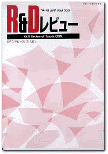|
|

 |
Vol.32 No.4(1997.12)
Research Report
|
| Improvement of Electromigration
Lifetime in Al-Si-Cu/Ti/TiN/Ti Layered Interconnects |
|
Tomoyuki Yoshida, Shoji Hashimoto,
Hideki Hosokawa,
Takeshi Ohwaki, Yasuichi Mitsushima, Yasunori Taga
|

Effect of the exposure of underlying dielectric
(borophosphosilicate glass) films to a humid air
ambient on crystallographic orientation in Al-Si-Cu/Ti/TiN/Ti
layered films has been investigated as a function
of the boron content and exposure time of the
dielectric films. The Al(111) orientation in the
layered films was found to improve drastically
with increasing boron content and exposure time
of the dielectric films. The full width at half
maximum value of the rocking curve for an Al(111)
x-ray diffraction peak reached 0.63 degrees, which
is the lowest value ever reported for an Al-alloy
film on Ti and/or TiN underlayers. It was also
found that the Al-Si-Cu surface became smoother
and the average grain size increased as the Al(111)
orientation improved. The improved Al(111) orientation
was attributed to the improved Ti(002) orientation
of the bottom Ti film. The cause of the improved
Ti(002) orientation was then investigated. As
a result, it was confirmed that the Ti(002) orientation
improved with increasing surface concentration
of the water absorbed in the dielectric films.
Further, it was demonstrated that interconnects
fabricated from the improved layered film had
excellent electromigration resistance.
|

|
|
|